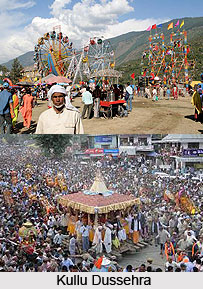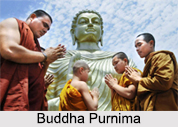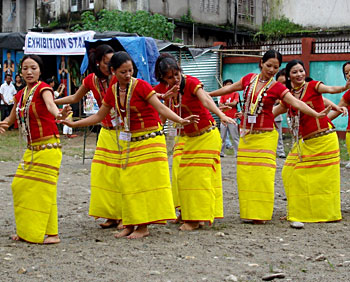 Kullu Dussehra is the Dussehra festival observed in the month of October in Himachal Pradesh.
Kullu Dussehra is the Dussehra festival observed in the month of October in Himachal Pradesh.
Kullu Dussehra is celebrated in the Dhalpur maidan in the Kullu valley of Himachal Pradesh. Kullu Dussehra at Kullu inaugurated on the tenth day of the rising moon that is on "Vijay Dashmi" day itself and continues for seven days.
History of Kullu Dussehra
The history dates back to the 17th century when king of Himachal Pradesh, Jagat Singh installed an idol of Lord Raghunath on his throne as a mark of penance. After this, Lord Raghunath was declared as the ruling deity of the Kullu Valley. The State government of Himachal Pradesh has accorded the status of International festival to the Kullu Dussehra, which attracts tourists in large numbers of both national and international level.
Mythological Legends of Kullu Dussehra
According to the mythological history of Kullu Dussehra, after his return from a pilgrimage to Kailash, Maharishi Jamdagni went to his hermitage at Malana. On his head he carried a basket filled with eighteen images of different gods. Crossing through Chanderkhani pass, Kullu Dussehra came upon a fierce storm. About struggling to stay on his feet, Maharishi Jamdagni`s basket was thrown from his head, scattering the images to many distant places. The hill people of Kullu, finding these images saw them take shape or form as Gods, and began to worship them.
Medieval History of Kullu Dussehra
In the 16th Century, Raja Jagat Singh ruled over the prosperous and beautiful kingdom of Kullu. As the ruler, Raja Jagat Singh came to know of a peasant by the name of Durgadatta who apparently possessed many beautiful pearls. The Raja thought he should have these treasured pearls, even though the only pearls Durgadatta had were pearls of Knowledge. But the Raja in his greed ordered Durgadatta to hand over his pearls or be hanged. Knowing of his inevitable fate at the hands of the king, Durgadatta threw himself on the fire and cursed the king. Doomed by his fate, the Raja Jagat Singh sought relief and searched out advice from a Brahmin. The Holy man told him that in order to eradicate the curse he must retrieve the idol of Ragunath from Raam`s kingdom. Desperate, the king sent a Brahmin to Ayodhya. One fine day the Brahmin stole the idol and set out on his journey back to Kullu. The people of Ayodya, finding their beloved Ragunath missing, set out in search of the Kullu Brahmin. On the banks of the Saryu river they approached the Brahmin and asked him why he had taken Ragunath ji. The Brahmin recounted the story of the Kullu king. The people of Ayodhya attempted to lift Ragunath, but their idol became incredibly heavy when headed back towards Ayodhya, and became very light when headed to Kullu. On reaching Kullu Ragunath was installed as the reigning deity of the Kullu kingdom. After installing the idol of Ragunath, Raja Jagat Singh drank the Charan-Amrit of the idol and the curse was lifted. Jagat Singh became Lord Ragunath`s regent. This legend is connected with the Dussehra at Kullu. This idol is taken in a sacred chariot to the Dussehra festival.



















